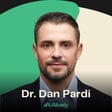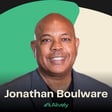
Healthspan: The Health Crisis Facing the US - E72
More than 12 years of poor health - that’s the average American’s reality, even as medicine extends our lifespans.
Chronic illness, lost independence, and emotional strain can turn our extra years into burdens instead of blessings. The gap between living long and living well is bigger in the US than anywhere else, leaving millions feeling stuck in bodies that survive but don’t thrive.
This episode is the second in a micro series diving into what healthspan actually means. Join me to unpack the urgency behind the healthspan crisis and map out why even advanced healthcare has failed to solve it.
In this episode you will learn:
- Why the gap between lifespan and healthspan exists and why it matters now.
- What the longevity paradox is and how it affects quality of life in America.
- How medical progress has helped people live longer but not always healthier lives.
- Why chronic diseases cause most of the years spent in poor health.
- How the healthspan gap impacts personal life, society, and the economy.
- The role of gender differences in healthspan and why women spend more years in poor health.
Resources
- Connect with Andrew on Instagram: https://www.instagram.com/mandrewmcconnell
- Follow Alively on Instagram for regular updates and insights: https://www.instagram.com/alively_official
- Learn more about healthspan from Andrew’s blog: https://www.mandrewmcconnell.com/blog
This podcast was produced by the team at Zapods Podcast Agency:
Find the products, practices, and routines discussed on the Alively website:


















